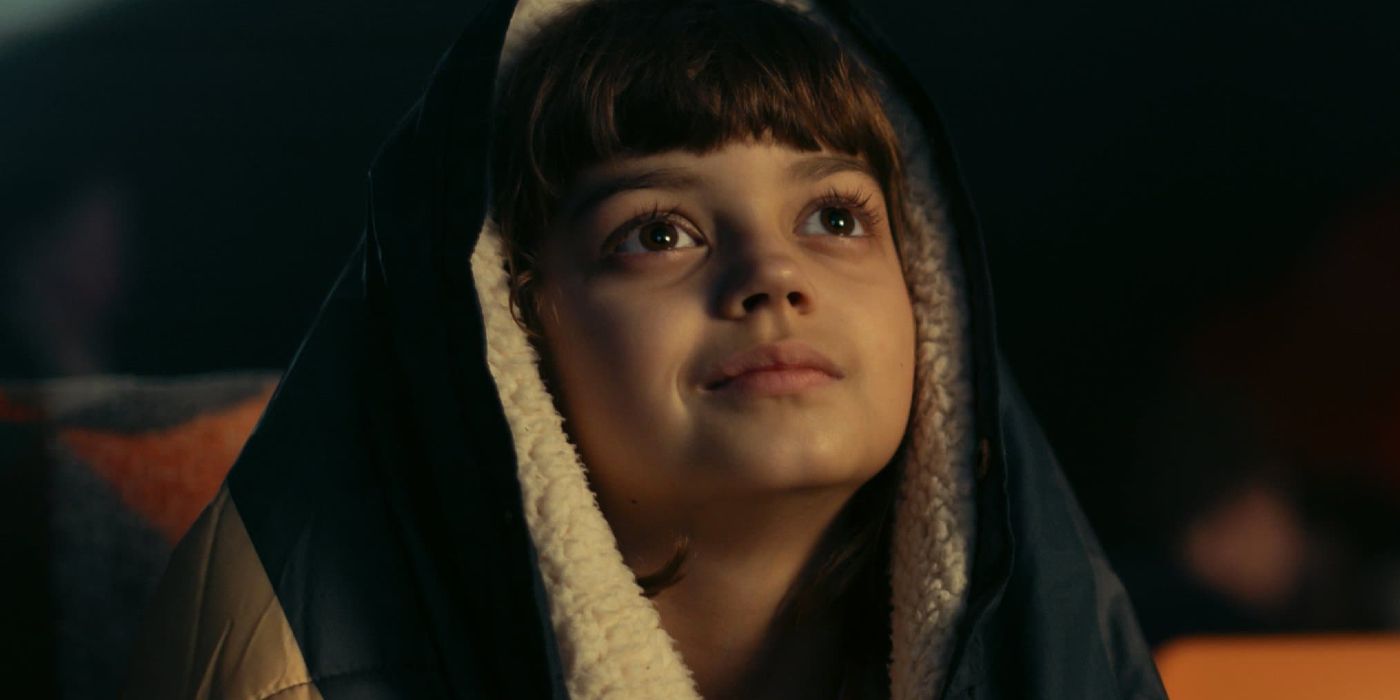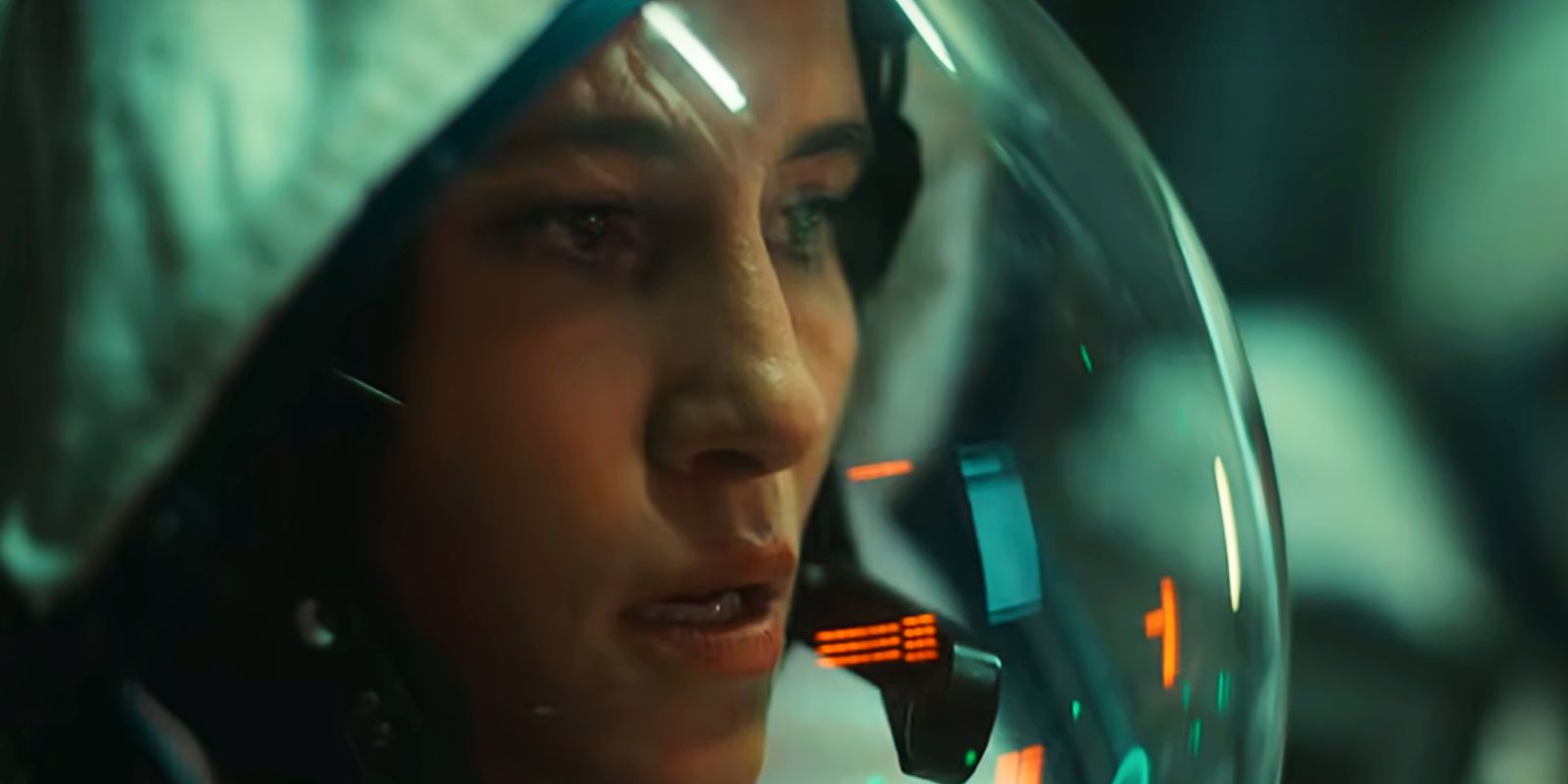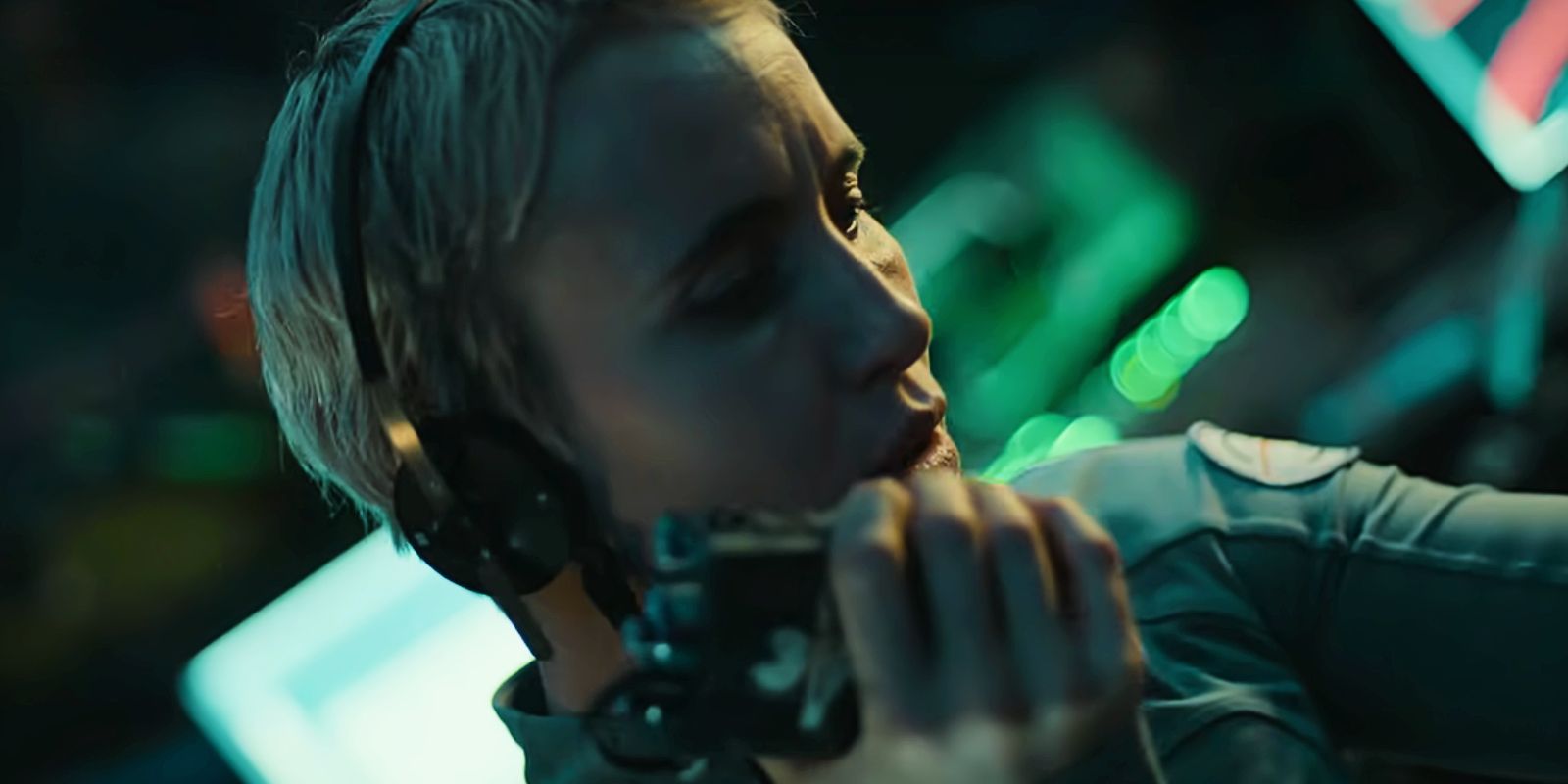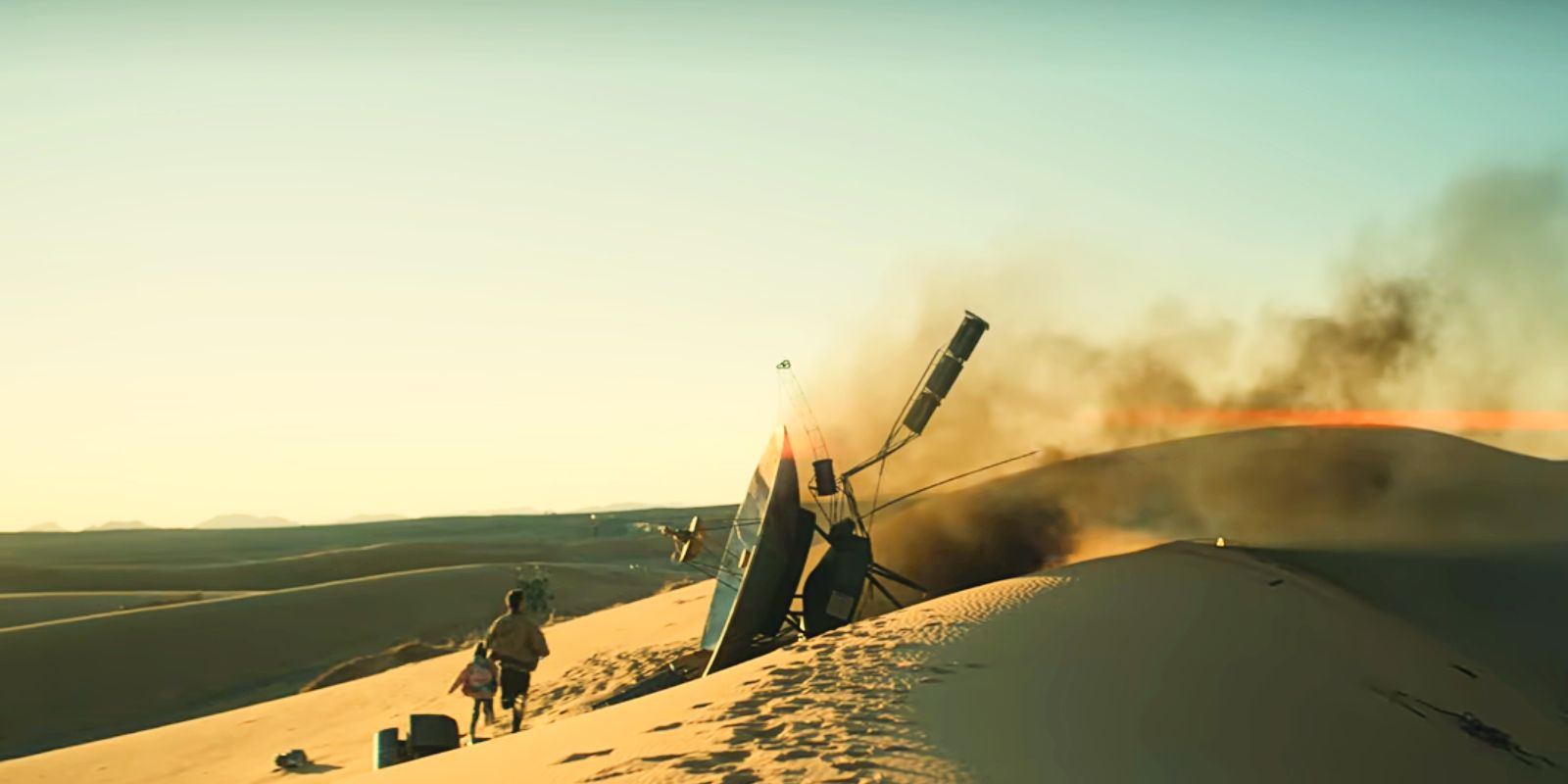
The True Story Of The Voyager’s Vinyl & Message
Summary
- The Signal on Netflix includes the Voyager’s golden record and its message to potential extraterrestrial beings.
- The end of the Signal briefly touches on the history of the Voyager probes and the effort to introduce Earth’s culture to alien civilizations.
- Carl Sagan’s son, Nick, voices the iconic “hello” message on the golden record, hoping for a future connection with extraterrestrial life.
The golden record aboard the Voyager, shown in Netflix’s The Signal, includes a fascinating true story and meaning. In The Signal, Paula keeps hearing a message saying “hello,” convincing herself that it was aliens trying to contact them and mimic their voices. However, the major twist at the end of The Signal is that the aliens use the Voyager’s golden record to send the “hello” message rather than mimicking the English language and inflection with their voices. Additionally, they send back the probe and message as a way to investigate the temperament of the human race before coming themselves.
While it might’ve seemed anticlimactic for the Voyager to land instead of an extraterrestrial ship, this narrative choice grounds The Signal in reality. Voyager 1 and 2 are real spacecrafts launched from Cape Canaveral, Florida, in 1977. When creating the probes, scientists affixed a golden record to the outside of each probe in case extraterrestrials discovered the Voyagers. These elements make The Signal seem like a more plausible alien story than many alien invasion movies. Additionally, the narrative choice introduces viewers to a great piece of scientific history – the golden records – which the NASA Voyager website explains at length.
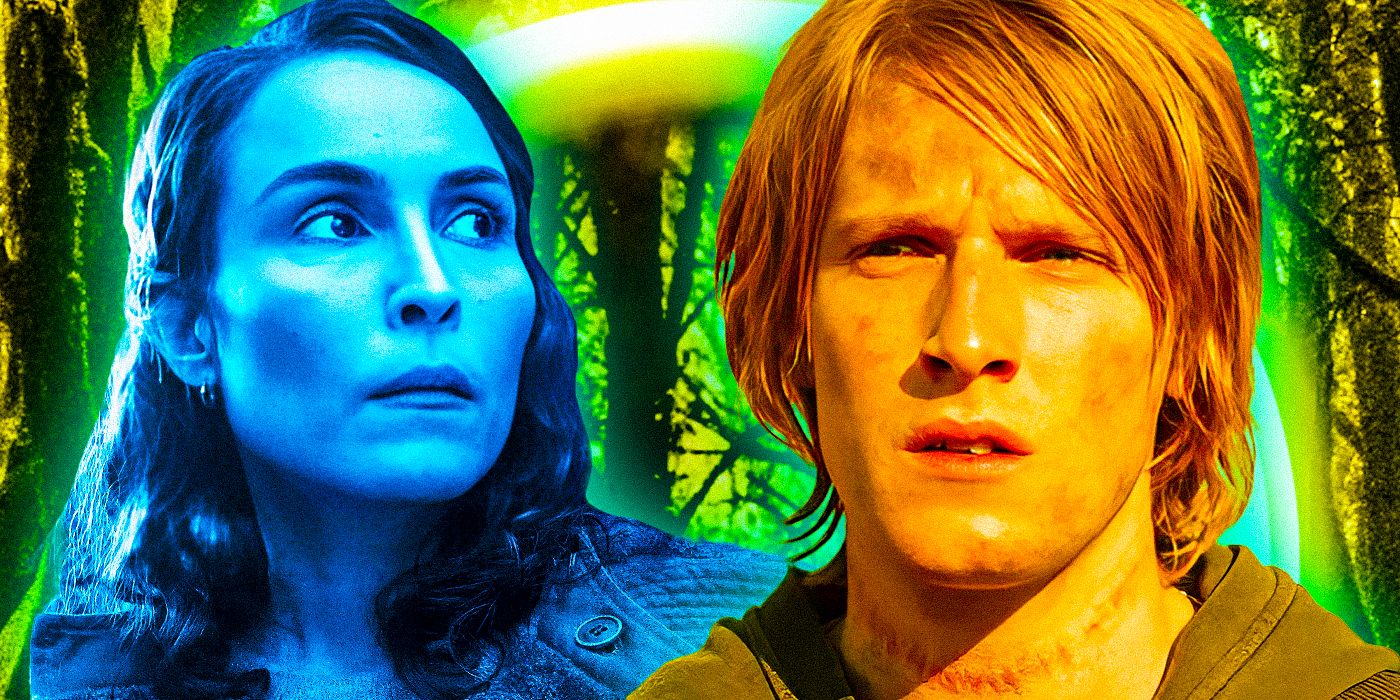
10 Great Sci-Fi Shows Like Netflix’s The Signal
Netflix’s new German-language show The Signal has become a surprise hit all over the world. Fans of the sci-fi mystery show are wondering what’s next.
What’s On The Voyager’s Golden Records In Real Life
When creating the phonographic records for the Voyager probes, a committee was formed to decide what exactly would be included. This committee was led by famous planetary astronomer Dr. Carl Sagan, who pushed the scientific community to search for extraterrestrial life. The idea behind the records was to introduce aliens to life and different cultures on Earth. To start with, the committee included 115 images in analog form from historical moments, landmarks, and science. This gives a visual understanding of the human race’s development. However, the more famous parts of the golden record are the greetings, sounds, and music.
As shown in The Signal, the Golden Record includes salutations in different languages. While there were only a few played in the miniseries, 55 different languages were included on the record in real life. Due to time constraints, the team collected speakers from Cornell University’s language departments and the nearby communities. Rather than giving the speakers a prompt, the scientists simply told speakers to say a brief greeting to potential aliens.
Additionally, these greetings aren’t the only sounds included on the records. The golden records aboard the Voyager probes also include a large variety of sounds recorded around Earth, such as elephants, trains, heartbeats, and laughter. These are meant to represent the different facets of our world that may be unfamiliar to extraterrestrials. It also could serve as a time capsule of sorts for generations, thousands of years in the future.
The Voyager’s Golden Record Playlist Explained
While the Golden Record in The Signal only included some of the greetings, the real vinyl also includes a carefully curated playlist that lasts 90 minutes. The songs come from all over the world, integrating as many cultures as possible. Some pieces like those written by Bach and Beethoven are classical, while others represent nations like the Navajo Nation and Senegal. Any extraterrestrials encountering this record would be able to see the various styles of music the world has to offer.
Controversially, the record also included modern hits like “Johnny B. Goode” by Chuck Berry and Dark Was The Night by Blind Willie Johnson. These additions, while different from the rest, are important because they represent the Black American community’s music that is often appropriated. However, they’re played by the original artists, granting them the recognition they deserve.
|
Songs on the Golden Records |
||
|---|---|---|
|
Song |
Artist/Origin |
Performer/Recorder |
|
Brandenberg Concerto No. 2 in F. First Movement |
Bach |
Munich Bach Concerto, conductor Karl Richter |
|
“Kinds of Flowers” |
Java: Court Gamelan |
Robert Brown |
|
Percussion |
Senegal |
Charles Duvelle |
|
Pygmy Girls Initiation Song |
Zaire |
Colin Turnbull |
|
“Morning Star” and “Devil Bird” |
Australian Aborigine |
Sandra Le Brun Holmes |
|
“El Cascabel” |
Mexico |
Lorenzo Barcelata and the Mariachi Mexico |
|
“Johnny B. Goode” |
Chuck Berry |
Chuck Berry |
|
“Men’s House Song” |
New Guinea |
Robert MacLennan |
|
“Tsuru No Sugomori” |
Japan, Shakuhachi |
Goro Yamaguchi |
|
Gavotte en Rondeaux” from The Partita No. 3 in E Major for Violin |
Bach |
Arthur Grumiaux |
|
The Magic Flute, Queen of the Night aria, no. 14. Edda Moser, soprano |
Mozart |
Bavarian State Opera, Munich, conductor Wolfgang Sawallisch |
|
“Tchakrulo” |
Georgian S.S.R. |
Collected by Radio Moscow |
|
Panpipes and Drum |
Peru |
Collected by Casa de la Cultura, Lima |
|
“Melancholy Blues” |
Louis Armstrong |
Louis Armstrong And His Hot Seven |
|
Bagpipes |
Azerbaijan S.S.R. |
Recorded by Radio Moscow |
|
“Rite of Spring, Sacrificial Dance” |
Stravinsky |
Columbia Symphony Orchestra, conductor Igor Stravinsky |
|
The Well-Tempered Clavier, Book 2, Prelude and Fugue in C, No.1. |
Bach |
Glenn Gould on piano |
|
Fifth Symphony, First Movement |
Beethoven |
The Philharmonia Orchestra, conductor Otto Klemperer |
|
“Izlel je Delyo Hagdutin” |
Bulgaria |
Valya Balkanska |
|
“Night Chant” |
Navajo Indians |
Recorded by Willard Rhodes |
|
Paueans, Galliards, Almains and Other Short Aeirs, “The Fairie Round” |
Holborne |
David Munrow and the Early Music Consort of London |
|
Panpipes |
Solomon Islands |
Collected by the Solomon Islands Broadcasting Service |
|
Wedding Song |
Peru |
Recorded by John Cohen |
|
“Flowing Streams” |
China, Ch’in |
Kuan P’ing-hu |
|
“Jaat Kahan Ho” |
India, Raga |
Surshri Kesar Bai Kerkar |
|
“Dark Was The Night” |
Blind Willie Johnson |
Blind Willie Johnson |
|
String Quartet No. 13 in B flat, Opus 130, Cavatina |
Beethoven |
Budapest String Quartet |
Carl Sagan’s Son Recorded The “Hello” Voice Heard In The Signal
While the world has failed to come together in the way they hoped when making the Voyager’s Golden Record, there is still time to change that
The voice heard throughout The Signal saying hello really appears on the Voyager’s Golden Record. When Voyager 1 entered the interstellar, Eos interviewed Nick Sagan, Carl Sagan’s son, who voiced the message. He recounted that his father sat him in front of a microphone at six years old and asked what he would want to say to theoretical aliens if they existed. His message, “Hello from the children of the planet Earth,” has become iconic and known all around the world.
When reflecting on his experience, he said that he feels giddy and thrilled that his voice represents the English language on the object that’s gone the furthest into the universe. However, Sagan doesn’t necessarily think that his voice will ever be heard by extraterrestrials. While he acknowledges the lack of concrete evidence for the existence of aliens, he hopes that extraterrestrials will one day hear the Voyager’s record, reach out to us, and discuss the history of their own civilization.
Nick Sagan’s hope is reflective of The Signal‘s overall message. While the world has failed to come together in the way they hoped when making the Voyager’s Golden Record, there is still time to change that. Society can become a representation of the beauty and diversity on the Golden Record. Then, if aliens do come to see us, they can find a thriving world full of peace and joy instead of war and separation.
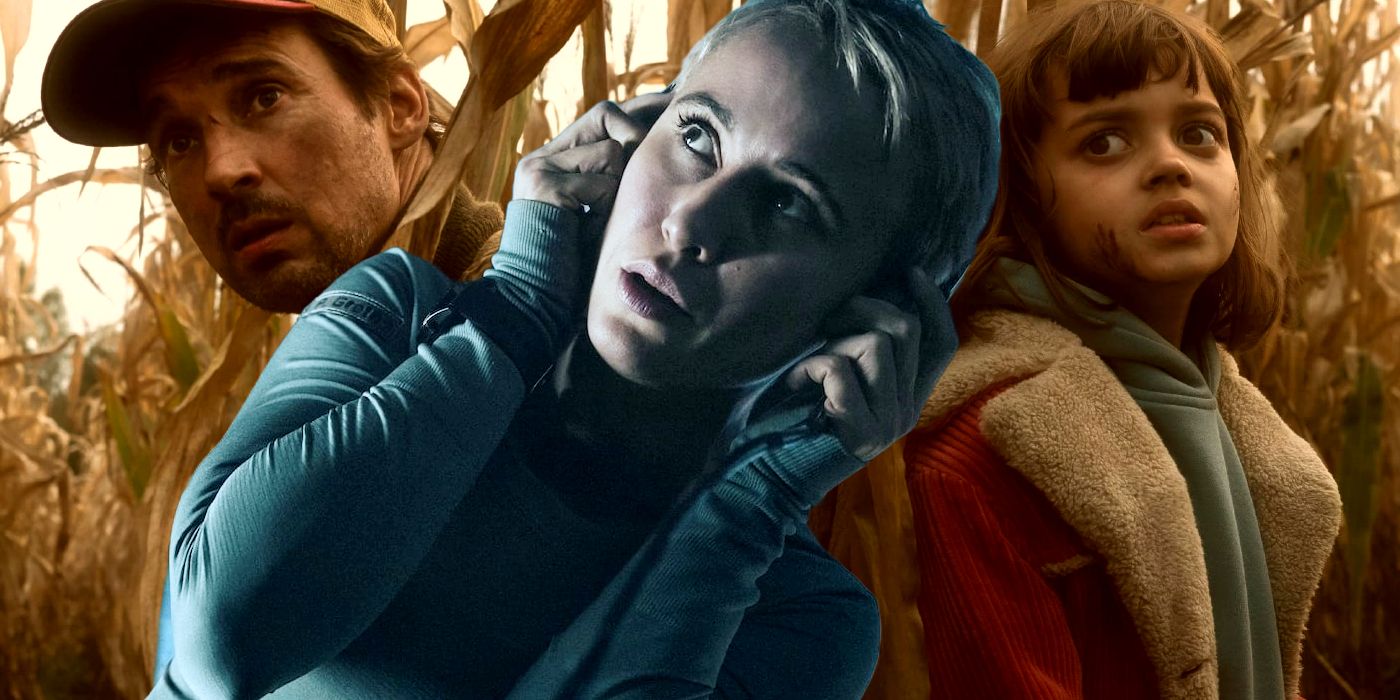
The Signal Cast & Character Guide
Netflix’s German-language science fiction show The Signal features an international cast including intriguing stars from Germany, India, and Iran.
How The Golden Records Were Made In Real Life
According to NASA, the creation of the Golden Record was a group project that required the most skilled people from various fields. In addition to the team that curated the contents of the record, the Pyral S.A. of Creteil France provided the blank records which were then sent to Boulder, Colorado. There, JVC Cutting Center created the masters, which then went to Gardena, California. There, the copper records were cut and plated. In total, eight to ten records were created. Two were placed on the Voyager probes. The others were sent to the following institutions and people according to a Jet Propulsion Laboratory (JPL) expert (via Business Insider):
- NASA’s Jet Propulsion Laboratory
- Johnson Space Center
- Kennedy Space Center
- Glenn Research Center
- Langley Research Center
- Goddard Space Flight Center
- National Air & Space Museum at the Smithsonian
- The Library of Congress
- President Carter
- The United Nations
The Voyager’s Golden Record Has A Bigger Mystery That The Signal Doesn’t Tell You
While the main mystery of The Signal is who is saying “hello,” there’s a much bigger real-life mystery surrounding the Golden Records. Of the ten records on Earth, only eight are accounted for. According to the JPL expert, the copies sent to The President and Langley Research Center cannot be located. This raises questions as to where the Golden Records are. To make matters more complicated, the original materials are for sale, meaning identical replicas could soon be on the market. This real-life mystery could make for a great true crime Netflix documentary.
Source: NASA Voyager website, Eos, and Business Insider
The Signal (2024)
- Cast
- Peri Baumeister , Florian David Fitz , Yuna Bennett , Hadi Khanjanpour , Sheeba Chadda , Katharina Schuttler
- Release Date
- March 7, 2024
- Seasons
- 1
- Writers
- Florian David Fitz , Nadine Gottmann , Kim Zimmermann , Sebastian Hilger
- Directors
- Sebastian Hilger , Philipp Leinemann

